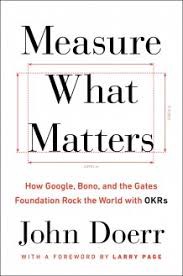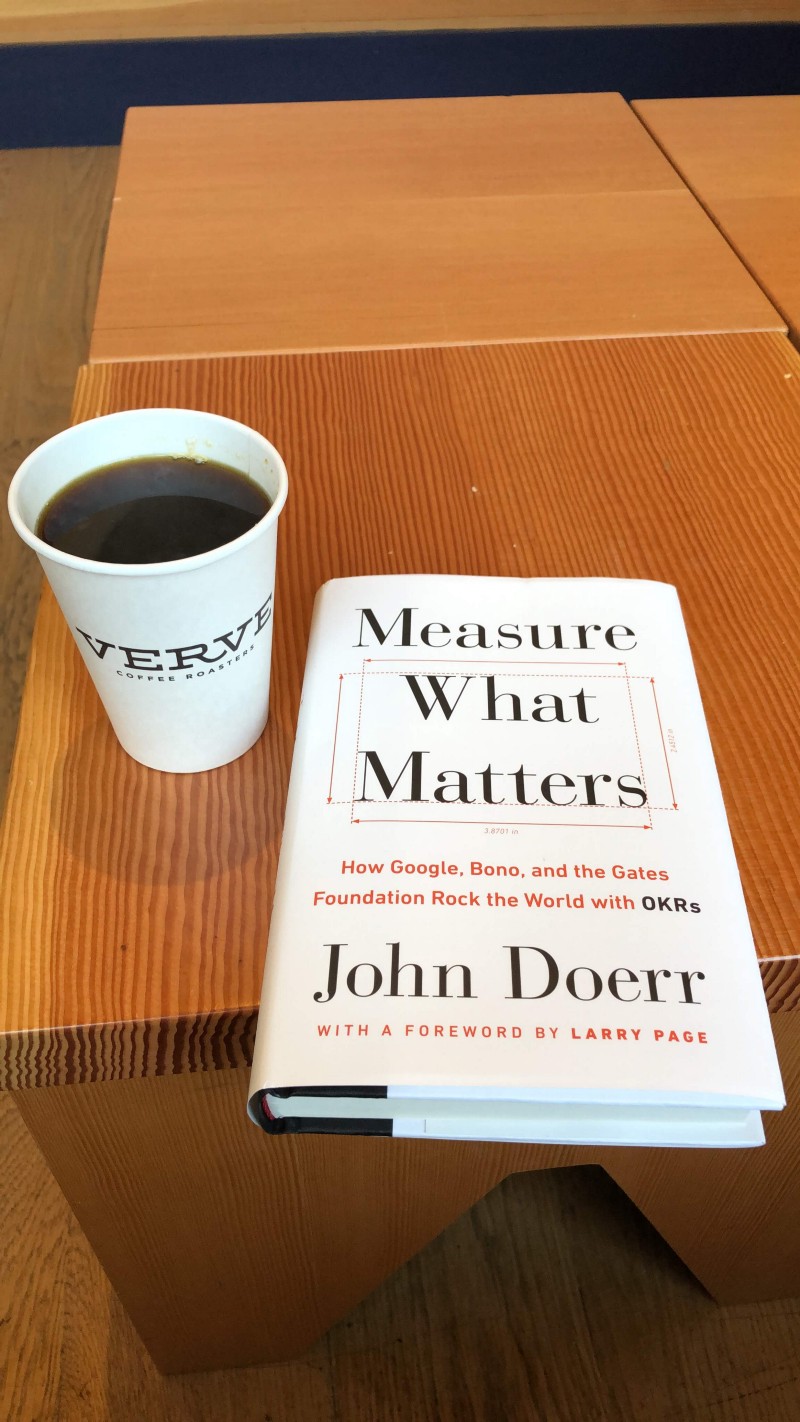Measure What Matters

John Doerr is pretty much a legend in the Silicon Valley. He’s a venture capitalist at KPCB, and was amongst the first backers of both Amazon.com and Google, two of the four largest US technology giants today. Earlier, in 1970s, he was one of the most successful salespeople at Intel in the Andy-Grove-era, and also holds several patents for memory devices.
I was really looking forward to reading this one, but I have to admit that this book disappointed me. The OKR system is arguably it’s one of the best goal setting systems out there. But does it need a whole book to understand? I don’t think so. The book just seems to be a vastly missed opportunity to me. Maybe my expectations were sky high hoping for a book on the same level as High Output Management or Hard Things About Hard Things.
Let me recap this book real quick for you, so you can skip it:
Objectives and Key Results (OKRs)
OKRs are a goal setting system. Each quarter, the company as a whole, the teams, and the individuals create a list of 3–5 Objectives, with 3–5 measurable Key Results each. Here’s a sample OKR for the Product team:

Here are a few points to note about OKRs:
- Objectives are ambitious, and should feel somewhat uncomfortable.
- Key Results are measurable; they should be easy to grade with a number (at Google, they use a 0–1.0 scale to grade each key result at the end of a quarter.)
- OKRs are public; everyone in the company should be able to see what everyone else is working on (and how they did in the past.)
- The “sweet spot” for an OKR grade is .6 — .7; if someone consistently gets 1.0, their OKRs aren’t ambitious enough. Low grades shouldn’t be punished; see them as data to help refine the next quarter’s OKRs.
- OKRs are not synonymous with employee evaluations.
OKRs are great for the following four superpowers they bring to your team:
- They help you focus and commit to priorities
- They help the team align and connect. Public, transparent OKRs spark and strengthen collaboration.
- They help the team track for accountability, monitor progress and course correct.
- They let you stretch for the seemingly impossible.
Conversations, Feedback, and Recognition (CFRs)
Doerr describes CFRs as “giving OKRs their human voice.” You need to give your team continuous coaching and feedback, and not save it up for a scheduled “annual review.” Feedback needs to flow bi-directionially and between peers. Positive Recognition needs to be continuous as well — both from managers, and from the peers. You should work to build real, authentic relationships with your managers and your reports through real conversations — these could be around both life and work. These coversations should be driven by the report, not the manager. The manager’s role is to listen and to coach.
OKRs + CFRs = Continuous Performance Management
OKRs catalyze culture. CFRs nourish it. The two tools, used together, can help bring a culture of transparency and accountability to your company, making it a much better place to work for everyone. As the Betterworks Blog puts it:
“Continuous Performance Management replaces the universally loathed and ineffective annual performance review with a valuable, continuous process that actually works for the organization.”
It seems that just reading GV’s blog post on OKRs will teach you as much as reading the whole book. If you’re looking forward to implementing the OKR system in your company, a low-fi solution like a public Google Doc may be good enough. If you can afford to splurge, a formal software system may work well for your company. Betterworks comes highly recommended.

This is #30 in a series of book reviews published weekly on this site.